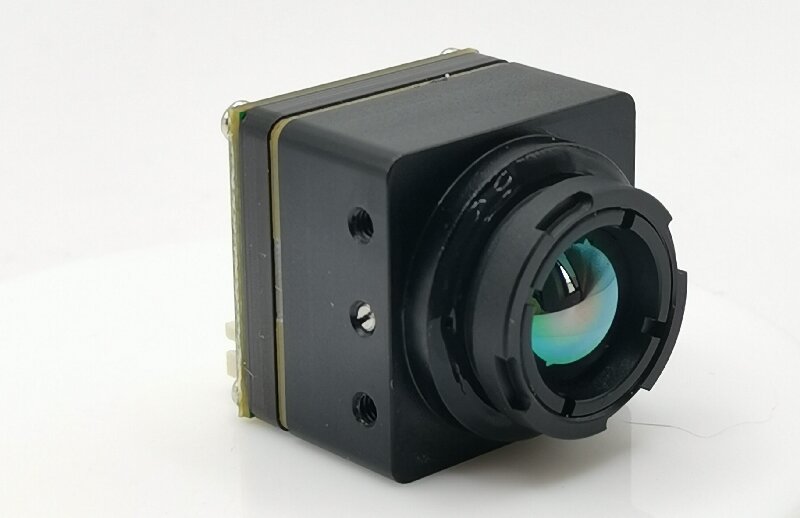Enhance Safety with Night Vision Thermal Camera for Vehicles

Revolutionizing Vehicle Safety with Night Vision Thermal Camera
The integration of night vision thermal cameras into vehicles is revolutionizing vehicle safety by providing enhanced visibility in challenging conditions. Thermal imaging technology has a significant impact on vehicle safety, as evidenced by the success of fused thermal AEB systems in preventing pedestrian injuries and effectively bringing vehicles to a stop in various test cases. The potential benefits of integrating thermal cameras into vehicles are exemplified by Teledyne FLIR's innovative approach, combining three sensor suites to ensure clarity and safety even in the most demanding road conditions.
Understanding Night Vision Thermal Camera Technology
Night vision thermal cameras utilize Vanadium Oxide non-cooling Infrared Focal Plane Detectors, which are essential for capturing infrared radiation and producing thermal images. The significance of this detector lies in its ability to operate without the need for cooling, making it more practical and efficient for vehicle applications.
Key Technical Specifications
The resolution of thermal imaging cameras is typically 256×192, providing detailed and high-quality thermal images. Additionally, the pixel size of 12μm contributes to the camera's ability to capture precise thermal data. The thermal time constant and frame rate play crucial roles in capturing real-time thermal information, with a frame rate of 25Hz ensuring smooth and accurate image rendering.
The detection distance for humans and vehicles is a critical specification that determines the camera's effectiveness in identifying potential hazards. With a NETD of ≤50mK @25℃ and a frame rate of 25Hz, these cameras can detect objects at significant distances, enhancing safety on the road.
Applications and Adaptations
Thermal imaging cameras find diverse applications in vehicles, drones, and handheld devices due to their ability to provide clear visibility in various environmental conditions. Their environmental adaptations and encapsulation ratings enable them to withstand harsh weather conditions while maintaining optimal functionality. Furthermore, their miniaturization, lightweight design, and low power consumption make them highly adaptable for integration into different vehicle models.
Advantages of Night Vision Thermal Cameras for Vehicles
Night vision thermal cameras offer significant advantages for vehicle safety, enhancing visibility and detection capabilities in various conditions.
Enhanced Safety Features
Thermal cameras have the remarkable ability to see through darkness, smoke, and other challenging conditions, significantly impacting vehicle safety. Their effectiveness in detecting pedestrians, bicyclists, and vulnerable road users plays a crucial role in preventing accidents and improving road safety. Furthermore, thermal imagery fills performance gaps by complementing existing sensors, leading to improved detection and classification algorithms.
Integration and Industry Leadership
The potential integration of thermal cameras into vehicles holds promise for enhanced safety features, particularly in advanced automatic braking systems. Teledyne FLIR's leadership in providing high-quality thermal cameras for automotive, defense, and industrial uses underscores the impact of thermal cameras on these industries. The integration of thermal imaging technology is poised to revolutionize vehicle safety across the automotive, defense, and commercial sectors.
The Future of Vehicle Safety: Integration of Night Vision Thermal Cameras
The integration of night vision thermal cameras into vehicles holds immense potential to revolutionize vehicle safety. As technology continues to advance, the implications of integrating thermal cameras into vehicles are far-reaching, with the potential to significantly reduce accidents and enhance overall road safety. Thermal imaging technology is set to play a pivotal role in shaping the future of vehicle safety, paving the way for innovative advancements that prioritize visibility and detection capabilities, ultimately making roads safer for everyone.
See Also
Improve Nighttime Driving Safety with Thermal Imaging Technology
Elevate Nighttime Driving Security with Thermal Imaging
Boost Night Driving Security with Thermal Imaging Tech
Upgrade Night Driving with Car Thermal Imaging Vision System
Improve Your Driving with our Car Thermal Imaging Night Vision
Contact Us: Ms. Coco Huang
E-mail: sales@iasun.cn
WhatsApp/Wechat: +86 13510421923

